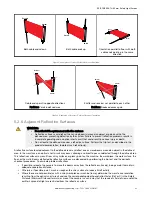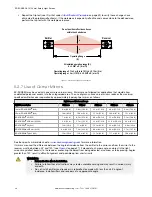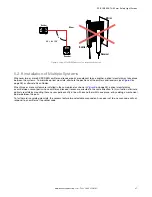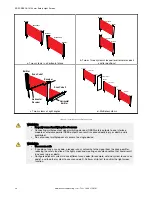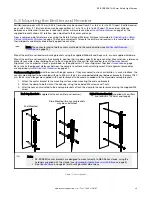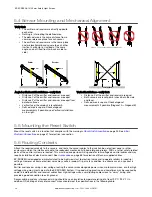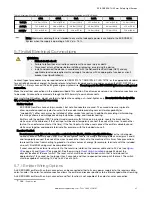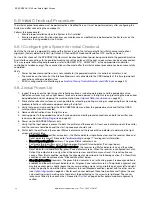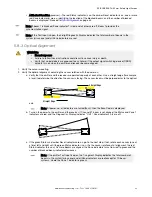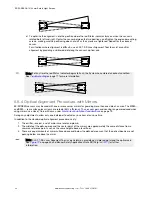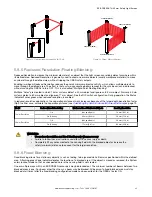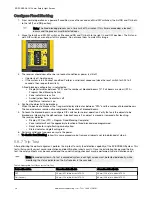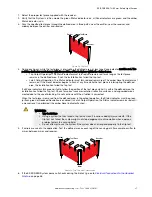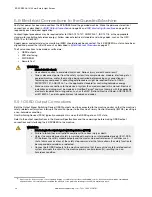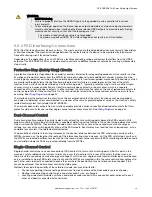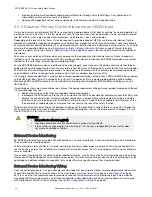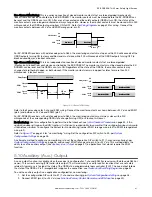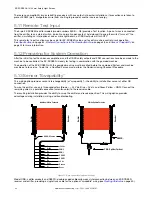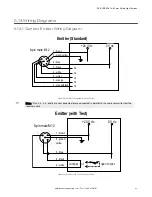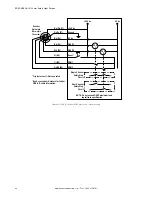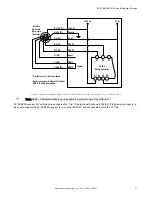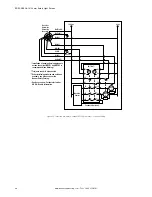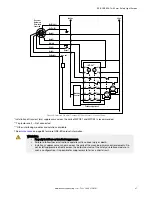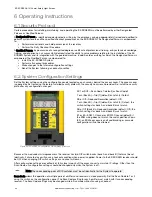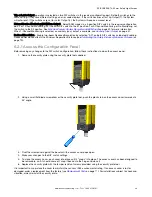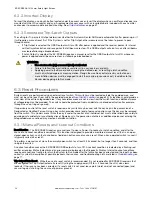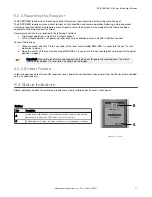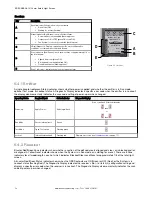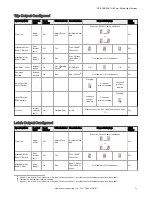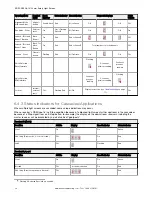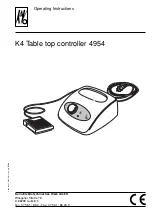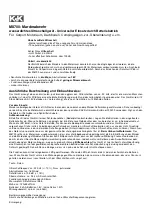
WARNING:
• OSSD Interfacing
• Failure to properly interface the OSSD Outputs to the guarded machine could result in serious
injury or death.
• To ensure proper operation, the Banner device output parameters and machine input parameters
must be considered when interfacing the Banner device OSSD outputs to machine inputs. Design
machine control circuitry so that all of the following are true:
The maximum load resistance value is not exceeded.
The maximum specified OSSD OFF-state voltage does not result in an ON condition.
5.9.2 FSD Interfacing Connections
FSDs (Final Switching Devices) take many forms. The most common are forced-guided devices, mechanically linked relays,
or interface modules. The mechanical linkage between the contacts allows the device to be monitored by the External
Device Monitoring circuit for certain failures.
Depending on the application, the use of FSDs can facilitate controlling voltage and current that differs from the OSSD
outputs of the EZ-SCREEN. FSDs can also be used to control an additional number of hazards by creating multiple safety
stop circuits.
Protective Stop (Safety Stop) Circuits
A protective stop (safety stop) allows for an orderly cessation of motion for safeguarding purposes, which results in a stop
of motion and removal of power from the MPCEs (assuming this does not create additional hazards). A protective stop
circuit typically comprises a minimum of two normally open contacts from forced-guided, mechanically linked relays, which
are monitored through External Device Monitoring to detect certain failures in order to prevent the loss of the safety
function. Such a circuit can be described as a "safe switching point". Typically, protective stop circuits are either single-
channel, which is a series connection of at least two normally open contacts; or dual-channel, which is a separate
connection of two normally open contacts. In either method, the safety function relies on the use of redundant contacts to
control a single hazard. If one contact fails On, the second contact arrests the hazards and prevents the next cycle from
occurring. See
on page 43.
The interfacing of the protective stop circuits must be accomplished so that the safety function cannot be suspended,
overridden, or defeated, unless accomplished in a manner of the same or greater degree of safety as the machine’s safety
related control system that includes the EZ-SCREEN.
The normally open safety outputs from an interface module provide a series connection of redundant contacts that form
protective stop circuits for use in either single-channel or dual-channel control. See
on page 43.
Dual-Channel Control
Dual-channel control provides the ability to electrically extend the safe switching point beyond the FSD contacts. With
proper monitoring, this method of interfacing is capable of detecting certain failures in the control wiring between the safety
stop circuit and the MPCEs. These failures include a short-circuit of one channel to a secondary source of energy or
voltage, or a loss of the switching ability of one of the FSD outputs. Such failures may lead to a loss of redundancy, or to a
complete loss of safety, if not detected and corrected.
The possibility of a failure to the wiring increases as the physical distance between the FSD safety stop circuits and the
MPCEs increases, as the length or the routing of the interconnecting wires increases, or if the FSD safety stop circuits and
the MPCEs are located in different enclosures. For this reason, dual-channel control with EDM monitoring should be used in
any installation where the FSDs are located remotely from the MPCEs.
Single-Channel Control
Single-channel control uses a series connection of FSD contacts to form a safe switching point. After this point in the
machine’s safety-related control system, failures can occur that would result in a loss of the safety function (such as a
short-circuit to a secondary source of energy or voltage). For this reason, single-channel control interfacing should be used
only in installations where FSD safety stop circuits and the MPCEs are mounted within the same control panel, adjacent to
each other, and are directly connected to each other; or where the possibility of such a failure can be excluded. If this
cannot be achieved, then dual-channel control should be used.
Methods to exclude the possibility of these failures include, but are not limited to:
• Physically separating interconnecting control wires from each other and from secondary sources of power
• Routing interconnecting control wires in separate conduit, runs, or channels
• Locating all elements (modules, switches, and devices under control) within one control panel, adjacent to each
other, and directly connected with short wires
EZ-SCREEN
®
14/30 mm Safety Light Screen
www.bannerengineering.com - Tel: + 1 888 373 6767
39

